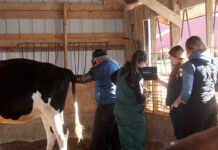Wallpaper was, and still is, available in endless designs, colors and imitation fabrics, including silk, linen, damask and tapestry. These include weaves such as druid, monk cloth, cords, canvas, burlaps and even basket weaves.
The latter varieties were embossed so they would appear just like the material they represented.
During this time, approximately 1914, there was oatmeal and textomeal wallpaper. They were named such because the colors and textures resembled meal.
At this time there was also a diverse leather effect.
Grass cloth. The Japanese made a paper-backed grass cloth in base colors. It became a favorite due to the hues and tones.
The wall covering was actually made from rice straw even though the name was grass cloth. People liked its high gloss.
Some of the paper was named after the popular ceramic pattern, willow.
Oil colors. Another addition to wallpaper design was a stippled finish resembling oil colors. Many manufacturers produced this type under several trade names, which were called blends and academy stipples.
Fad. A fad at that time was black; black and white; or black and gold paper.
An example was one called tea-chest paper that had a silver or gold background with small French landscapes or Chinese designs. These depended on the interior design.
There were also black backgrounds with silver or gold adornment.
One type had a black background with an excellent Byzantine pattern in brilliant gold. This pattern represented Egyptian motifs.
Wainscot effect. The aforementioned monk and druid and another named Cairocloth were favorites for the wainscot effect. Others resembling cloth or burlap were used for upper walls. Tapestry types were placed in rooms with heavy adornment.
The canvas blends, stipples and certain burlap types were best for halls. These were available in almost every conceivable tone suitable for such walls.
Price ranges. High-priced or colorful Japanese leather papers were used in more formal residences. The moderate homes adapted hundreds of attractive papers at a lower cost.
Reception rooms often had a plain and comfortable atmosphere.
Colonial papers had quaint features of the era. They featured landscapes that were becoming to a country home.
There were many verdure tapestry papers with foliage in tones of tan to burnt shadings. They also had diverse green shades that were suitable for dining rooms.
Pleasing blends. A particularly nice effect on walls with wainscot was to place a pleasing blend on the upper part of the wall and put a vertical design on the bottom.
If the walls were not divided, this effect was obtained by paneling the lower section in a plain, deep-toned paper and applying a vivid border that divided the lower wall section from the above. Then a printed paper was put on the upper section.
Another method. Sometimes another method was used. The upper one-third of the wall was papered with an all-over design. Then the lower two-thirds had paper with flowers, leaves and vines in a vertical position but without vertical stripes.
A suggestion to remember is that vivid, rich colors don’t give a “resting” feel to a room. Pastel or neutral colors are better for a room meant for rest.












